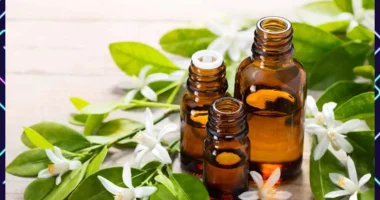If you are one of those people who often feel skeptical about the effectiveness of oily skin remedies, then you may want to read on.
Oily skin is a common skin type that affects many people, especially during adolescence and early adulthood. Having oily skin is a sign that your skin is doing its job.
Our skin has tiny glands called sebaceous glands. These glands produce a natural oily substance called sebum, which helps keep our skin and hair healthy and moisturized. The sebaceous glands are found all over our body, especially on our face, scalp, and back. When we are young, These glands work hard to produce enough sebum to keep our skin soft and protected. However, sometimes they can produce too much oil, leading to oily skin.
When the sebaceous glands produce the right amount of sebum, it helps to create a protective barrier on the skin. This barrier keeps moisture in and prevents harmful bacteria and dirt from entering. A healthy amount of sebum can make our skin look dewy and fresh. However, when there is an overproduction of sebum, it can lead to problems like clogged pores, acne, and a shiny appearance.
Several factors can cause the sebaceous glands to produce more oil than usual. Hormonal changes, such as those that occur during puberty or menstruation, can increase sebum production. Stress and certain medications can also play a role. Additionally, a diet high in sugars and unhealthy fats may trigger the glands to work overtime.
Although managing oily skin can be a challenge, there are natural remedies that can help reduce its symptoms without relying on prescription drugs or expensive skincare products.
Here Are Five Natural Remedies for Oily Skin
1. Orange
Orange peels are a fantastic natural remedy for oily skin. They are packed with astringent properties, which means they can help tighten the skin and reduce excess oil production. This makes them a great choice for anyone looking to manage shine and keep their skin looking fresh. Additionally, the vitamin C found in orange peels is known for its ability to prevent wrinkles and promote a soft, youthful complexion.
Steps:
To use orange peels for oily skin, follow these simple steps:
- Start by letting the orange peels dry under the sun until they become crisp. This process helps to preserve their beneficial properties.
- Once the peels are completely dry, blend them into a fine powder. This powder will be the key ingredient in your skincare routine.
- Mix the orange peel powder with rose water to form a smooth paste. Rose water adds additional benefits, such as soothing the skin and adding hydration.
- Spread a layer of the orange peel and rose water paste evenly over your skin. Leave it on for about 15 minutes. This allows your skin to absorb all the goodness from the orange peels.
- After 15 minutes, rinse the paste off with water and gently pat your skin dry with a clean towel.
For an added boost, you can also apply fresh orange juice directly to your skin. This not only helps to brighten your complexion but also gives your skin a youthful glow. For even better results, consider mixing the orange juice with other natural ingredients like honey or yogurt. This combination can enhance the benefits and leave your skin looking radiant and healthy.
2. Honey
Honey is often celebrated as one of nature’s best remedies for skin care. Its unique properties make it especially beneficial for those with oily and acne-prone skin. Honey is known for its antibacterial and antiseptic qualities, which help combat the bacteria that can lead to breakouts. This makes it a popular choice for anyone looking to improve their skin’s health.
One of the reasons honey works so well for oily skin is that it acts as a natural humectant. This means that it helps to draw moisture into the skin without making it greasy. Unlike some products that can leave your skin feeling heavy or oily, honey keeps your skin hydrated and balanced. It attracts moisture from the environment and locks it in, ensuring your skin stays moist without adding excess oil.
Steps:
Here’s a step-by-step guide on how to use honey to reduce the symptoms of oily skin
- Take a small amount of raw honey and spread a thin layer evenly over your face. Raw honey is preferred because it retains more of its natural nutrients and benefits.
- Allow the honey to sit on your skin for about 10 minutes. During this time, the honey will work its magic, helping to cleanse your pores and dehydrated skin.
- After 10 minutes, rinse your face thoroughly with lukewarm water. Make sure to remove all the honey to leave your skin feeling fresh and clean.
With its natural properties, honey not only helps control oil but also promotes a healthier complexion overall. Try this simple remedy regularly, and you may notice a significant improvement in your skin’s texture and appearance.
3. Aloe Vera
Aloe Vera is a remarkable plant that offers many benefits for our skin. Known for its ability to soothe burns and heal various skin conditions, Aloe Vera is also effective in managing the symptoms of oily skin. Its natural properties can help reduce excess oil and calm irritation, making it a great addition to your skincare routine.
Research supports the idea that Aloe Vera can be particularly helpful for those who experience flaky skin due to oily patches. It works by moisturizing the skin without adding extra oil, which can help balance your skin’s natural oil production.
Steps:
If you want to try Aloe Vera to help with your oily skin, here’s a simple procedure you can follow:
- Before going to bed, take some pure Aloe Vera gel and apply a thin layer to your face. Make sure to cover the areas that feel particularly oily or irritated.
- Allow the Aloe Vera to work its magic overnight. This gives your skin plenty of time to absorb the nutrients and benefits.
- When you wake up, rinse your face with water to remove the gel. You should notice your skin feeling refreshed and less oily.
Note: While Aloe Vera is generally safe for most people, it can cause allergic reactions in those with sensitive skin. If you haven’t used Aloe Vera before, it’s a good idea to do a patch test. Simply apply a small amount of the gel to your forearm and wait for 24 to 48 hours. If you don’t experience any redness or irritation, it should be safe for you to use on your face.
4. Tomatoes
Tomatoes are not just a delicious addition to your meals; they can also be a great natural remedy for oily skin. This might sound surprising, but tomatoes contain salicylic acid, which is often used in acne treatments. This acid is effective in helping to manage oily skin by absorbing excess oil and unclogging pores.
Steps:
- Start by taking one ripe tomato and scoop out its pulp. Then, mix this pulp with one teaspoon of sugar. The sugar acts as a gentle exfoliant, helping to remove dead skin cells while the tomato works on the oiliness.
- Take the mixture and apply it to your skin using circular motions. This not only helps to spread the mask evenly but also stimulates blood circulation, giving your skin a healthy glow.
- Allow the mask to sit on your skin for about five minutes. This gives the salicylic acid time to work its magic, absorbing excess oil and helping to clear out your pores.
- After five minutes, rinse your face thoroughly with lukewarm water. Make sure to remove all the mask, and then gently pat your skin dry with a clean towel.
5. Apple Cider Vinegar
Apple cider vinegar (ACV) is a popular natural remedy known for its many benefits for the skin. One of the key reasons people love using ACV is its richness in alpha hydroxy acids, which are great for moisturizing and toning the skin. Additionally, ACV has antibacterial properties that can help fight the bacteria responsible for acne, making it a useful option for those with oily skin.
Steps:
To use apple cider vinegar for reducing oily skin symptoms, follow these simple steps:
- Start by combining 1/4 cup of apple cider vinegar with 3/4 cup of distilled water in a clean container. This dilution is important to prevent irritation.
- Take a cotton ball and dip it into the mixture. Gently apply the solution to your face, focusing on areas that tend to be more oily or prone to breakouts.
- Allow the mixture to sit on your skin for about 5 to 10 minutes. This gives the ACV time to work its magic.
- Rinse your face with cool water to remove the solution after the time is up. This will leave your skin feeling refreshed and balanced.
For added benefits, you can also drink a mixture of one teaspoon of apple cider vinegar in a glass of water before bedtime. This can help improve your overall skin health from the inside out. However, If you can’t find apple cider vinegar, white vinegar is a good alternative. It also has exfoliating properties and can help control oil production on your skin.
Another thing you can try out is washing your face regularly. Aim to wash your face at least twice a day to remove excess oil and dirt. However, be careful not to use harsh soaps or detergents, as these can strip your skin of its natural oils and potentially worsen oiliness. Stick to gentle cleansers that will clean your skin without causing irritation.
ALSO READ: Skin tightening fruits: What to eat to firm your skin fast









